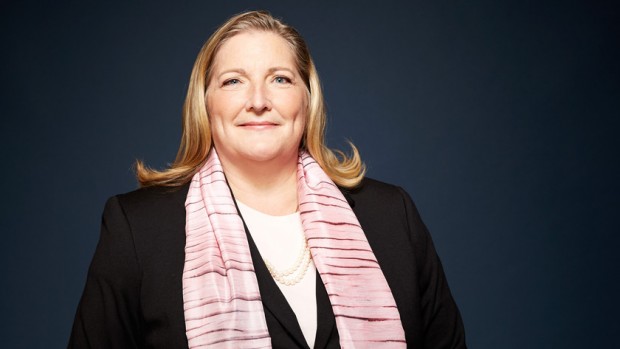When Debra Wetherby started her investment advisory firm in 1990, she was 32, just married and had less than $50,000 of capital.
She plunged into an emerging industry of advisers who run their own businesses rather than operating inside big brokerages such as Morgan Stanley, which she’d left in 1988. With 10 clients betting on her, working without a salary and living on credit cards, she rented an office on San Francisco’s Sansome Street and gave herself a deadline: make money in three years, Bloomberg Markets magazine will report in its January issue.
Today, Wetherby Asset Management leases the entire eighth floor of a financial-district high-rise adorned with toga-wearing female statues dubbed the corporate goddesses.
From this perch and another office in Manhattan, the firm serves about 500 families who generally have at least $10 million to invest. That added up to $3.5 billion in 2013, lifting Wetherby’s firm to No. 1 in Bloomberg Markets’ first ranking of independent registered investment advisers, or RIAs, based on the assets they manage.
Few people knew the term RIA when Wetherby started. Now, the field is on a tear.
“In hindsight, it looks very prescient,” Wetherby, 56, who’s the chief executive officer, says. “It really was more about serving clients a certain way.”
‘Growth Cycle’
RIAs are required to put customers’ interests first and usually earn a fee on assets under management. Brokers, who often call themselves advisers, only have to recommend investments that are suitable and can make commissions from products their firm sells. Some financial professionals register as advisers and brokers.
The Dodd-Frank financial overhaul spotlighted the differences at the same time a wave of baby boomers were seeking help making their money last.
“It’s been a continuous growth cycle for RIAs over the past seven years because of the complexity of markets and changing needs of clients,” says Bernie Clark, head of adviser services at Charles Schwab Corp. (SCHW) Schwab holds more than $1 trillion in assets for about 7,000 independent RIAs, which amassed $60 billion in new money in 2013.
The Bloomberg Markets ranking includes RIAs registered with the U.S. Securities and Exchange Commission that reported that more than 75 percent of their clients have high net worth, meaning they have $2 million in net worth or $1 million with the adviser. We excluded those who take commissions or are affiliated with a bank, insurer or other financial firm.
Rising Share
The more than 20,000 independent RIAs in the U.S. have gained market share among wealth managers every year since 2007, increasing their assets 82 percent to $2.3 trillion from 2007 to 2013, Boston-based research firm Aite Group LLC says. In contrast, client assets at the largest retail brokerages rose 8.2 percent to $6.2 trillion in the same period.
“The RIA field appeals to both the best and the worst instincts of financial professionals,” says Barbara Roper, director of investor protection at the Consumer Federation of America.
She says the RIA model reduces conflicts of interest, though these advisers can have less federal oversight and fewer licensing requirements. Some, such as Wetherby, are certified financial planners and analysts.
New England Private Wealth Advisors LLC grew the fastest among the top 50. The firm, based in Wellesley, Massachusetts, boosted assets 44.8 percent to $794 million in the year ended on Dec. 31, 2013. CEO Ira Rapaport, 51, says the firm serves about 200 customers who generally have at least $2 million to invest.
Read more: Top Independent Adviser With $3.5 Billion Once Lived on Credit















No Comments